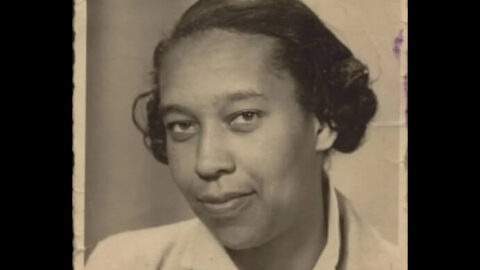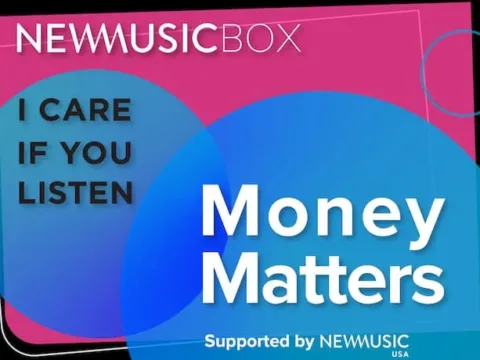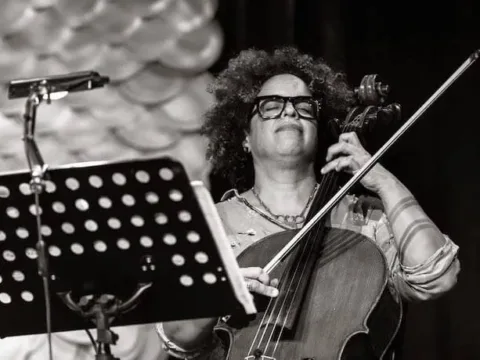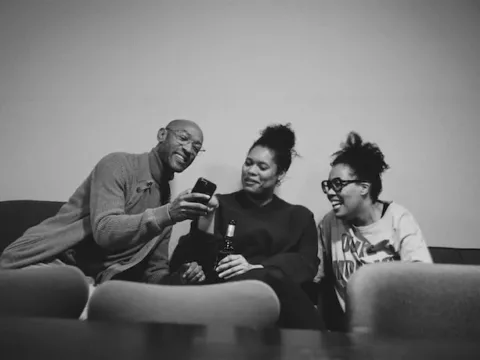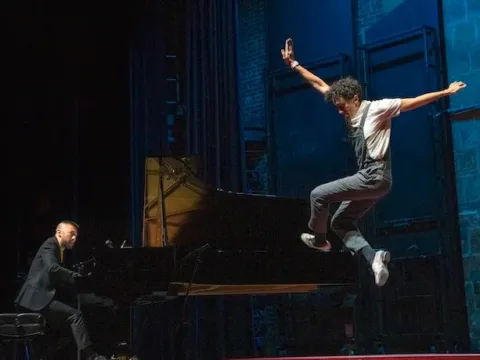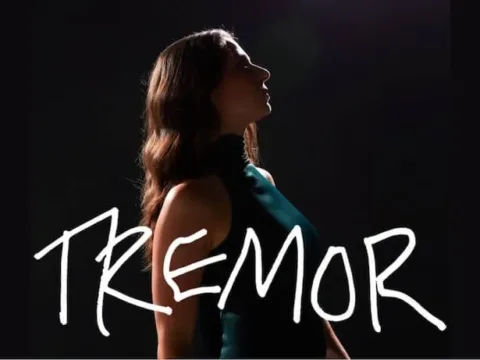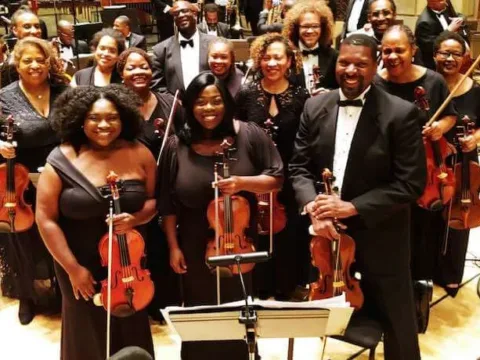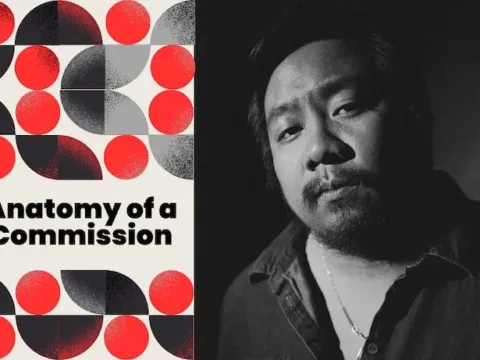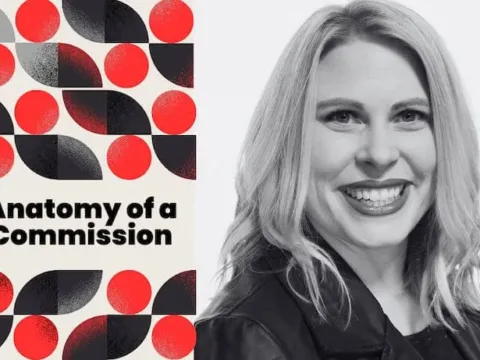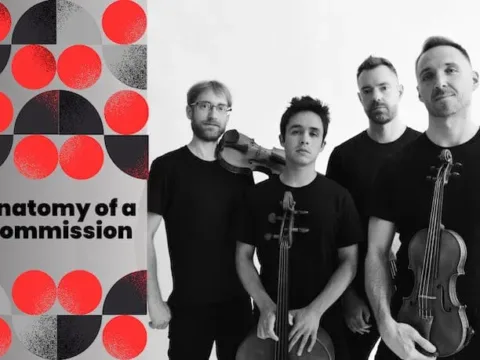From Manchester, England to New York City, performers, scholars, and music lovers gathered through the month of March to commemorate the 100th birthday of the African American composer Julia Perry, born March 24, 1924. Perry was extraordinarily accomplished: she earned awards from the Guggenheim Foundation, the National Institute of the Arts and Letters, and had her music performed by top ensembles in the US and Europe.
She also crossed paths with all the greats of her time: composer Aaron Copland celebrated her music at Columbia University, she wrote her Stabat Mater (1951) with contralto Marian Anderson in mind, and she studied with legendary composers Nadia Boulanger and Luigi Dallapiccola. But, indigence, illness, and her outsider status as a minority-identity woman composer in American classical music muted her career. Despite being recognized as one of the most talented American women composers of her generation, Perry died in obscurity at the age of 55.
The rich catalog of music that survives Perry includes numerous works for voice, many different chamber ensembles, orchestra, and other large ensembles. When Perry died in 1979, only a small number of her compositions had been published and recorded. This left a monumental task for the scholars and musicians who approached Perry’s work after her death, often stretching and blurring the boundaries between musical and academic practices.
The fruits of this labor, which include transcriptions of Perry’s original manuscripts and advocacy for new recordings, began resonating powerfully in the last decade. Recent centenary events have explored the life, music, and legacy of a prodigious talent whose artistic path was cut all too short, not only by illness but also by structural inequalities. As we reflect on the current wave of performances, recordings, and festivals in Perry’s honor, we simultaneously explore what it meant to be a brilliant Black woman composer in a classical world that wasn’t ready. We interrogate the structural barriers that she faced in her time and that are all too present in ours. We advocate that her time is now.
To this day, Black women composers are largely considered an unmarketable risk for record labels and presenting organizations. Additionally, the task of programming their music is made doubly challenging when the performers are also of African descent and continue to navigate a sense of nonbelonging in the classical world. The exclusionary status quo persists, perpetuating a vicious cycle that requires colossal force (and fortune) to disrupt, which I (Samantha) have experienced firsthand in an effort to record the piano works of historical Black women composers.
I learned about Perry almost a decade ago through her one-page Prelude (1946, rev. 1962). Musicologist and pianist Helen Walker-Hill published it in her compendium Black Women Composers: A Century of Piano Music and recorded it on her album Kaleidoscope. Prelude is slow-moving and introspective; it is somber in tone, but the final measure ends optimistically, like a burst of sunlight. I wanted and needed to hear more of her pianistic voice.
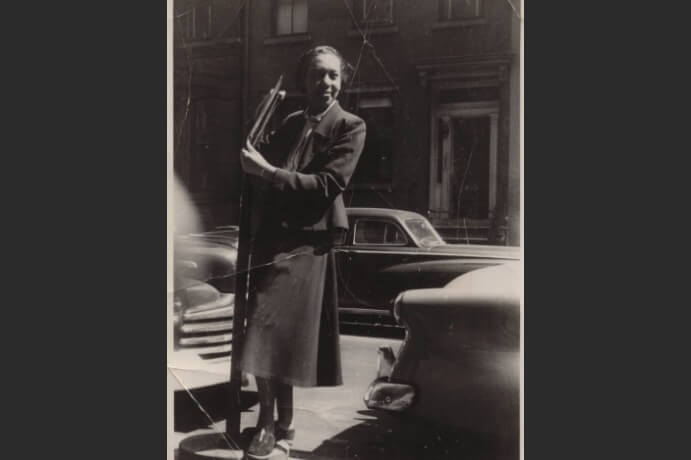
That opportunity came two years ago when the BBC Philharmonic recorded a one-off live performance for radio of Perry’s Concerto for Piano and Orchestra in Two Uninterrupted Speeds (1969). I heard so much of her personality and magic in this piece: there was introspection as with the Prelude, but also humor and laughter; I could feel her conjuring up a musical universe in her own image throughout.
This fall, I will present the first commercial recording of Perry’s Concerto on my fifth album, Works for Piano and Orchestra by Julia Perry, Doreen Carwithen, and Clara Schumann, with conductor Odaline de la Martinez and her Lontano Ensemble, and funding from the University of Southampton and Women’s Philharmonic Advocacy. The recording will be released on the nonprofit LORELT (Lontano Records Ltd.), which Martinez founded in 1992 to “promote recordings of important repertoire neglected by major labels.”
As a result of classical music’s systemic barriers, the recorded catalog of piano concertos by historical Black women composers remains incomplete and in recovery. But it is this incompleteness and capacity for recovery that inspires me to push through. I have recorded one of the earliest known piano concertos by an African American woman: Helen Hagan’s 1912 Piano Concerto in C minor, a one movement piece and her only surviving work. Its rich Romantic expressivity foreshadows another concerto that has, in very recent years, enjoyed more regular programming: Florence Price’s Piano Concerto in One Movement (1934) – the second earliest known piano concerto by a Black woman. Three decades on from Price’s concerto, we have Perry’s, written in an experimental postmodern style that, as musicologist Tammy L. Kernodle shows, challenges the metanarratives of what came before and shows the aesthetic breadth of Black women’s classical brilliance.
Perry’s obscurity is not connected to the quality of her music; rather a series of structural factors, including the small and little-known recorded catalog that survived her, reflect the exclusive and exclusionary nature of achieving success in classical music. I (Garrett) came to Julia Perry’s music around 2017, through Janice Y. Wilson’s masters thesis Black Serious Composers, which she completed at Eastern Michigan University in 1971. When I looked for recordings of Perry’s work, all I could find was Stabat Mater, but I was struck by its mixture of atonal and traditional classical aesthetics. From Stabat Mater alone, I felt Perry was an exceptional mid-century American modernist and was eager to listen to as much of her music as possible, but it was hard to find recordings of more than a handful of her pieces.
At the time, I was working as an educator and the leader of a nonprofit concert presenting organization. In both of these roles, I sought to highlight historically excluded composers. A critical component of diversifying curricula and programming is the availability of recordings and scores. Informal online recordings of Perry’s music played an enormous role in expanding what I could offer my students and audiences, but her lack of presence within mainstream recording and publishing networks continues to hinder access to her scores and performances of her music.
Complex copyright issues have excluded composers like Perry from equitable opportunities for centuries and have prevented many of her known compositions from being recorded or performed publicly. Because Perry died without heirs or an estate, her intellectual property became ensnared in Ohio’s probate court system. A few years ago, the Akron Symphony and music director Christopher Wilkins engaged local attorneys and judges to start the tedious process of resolving the ambiguities surrounding the rights to many of Perry’s compositions, both published and unpublished. Without their progress, the newfound interest in Perry’s works would be moot since much of her catalog would be inaccessible to performers and concert audiences until 2049, the year her music enters the public domain.
Louise Toppin, Professor of Voice at the University of Michigan and founder of the African Diaspora Music Project, epitomizes the intergenerational community of scholars and musicians who have been working with Julia Perry’s life and music for decades. Toppin’s work resonates with me because it mixes scholarship, performance, recordings, and essential, though tedious, logistical work — like engraving manuscripts — to form a kind of full-court-press resistance to the barriers that have prevented and disincentivized soloists and ensembles from approaching her music for decades. In the last few years, her advocacy has also extended to direct partnerships with leading American musical institutions, like the Minnesota Orchestra, leading to influential performances of Perry’s symphonic compositions.
Perry’s enormous accomplishments should have secured her legacy as one of the country’s great musical voices, but American classical music’s general discomfort with Black composers took its toll, both during and after her life. Her collaboration with the New York Philharmonic in 1964 and 1965 illustrates that, despite her prestigious achievements, white-led musical institutions would not grant her artistic agency. The Philharmonic programmed a new version of her 1952 work Study of Orchestra (originally called Short Piece for Orchestra) on a May 1965 concert, refusing multiple requests from Perry that they instead play a newer, political work entitled Liberation, which is now lost.
Racial bias is also evident in the conventional narrative of Perry’s career — a tragic fall from the heights of American musical culture, and a personal failing to sustain her accomplishments. But this ignores the perspective held by the Black American musical community that she was a monumental success. Perry was notably praised throughout her career in the Black press, and the biggest champions of her music were African-American singers like Betty Allen and Adele Addison.
The recent Julia Perry Centenary Celebration and Festival in New York was a landmark moment in the decades-long recovery of her compositional output and restoration of her legacy. Organized by Toppin and conductor James Blachly of the Experiential Orchestra, this historic celebration began on March 13 at Le Poisson Rouge, where an audience featuring many newcomers to Perry’s music heard a program highlighting and reflecting on her chamber works.
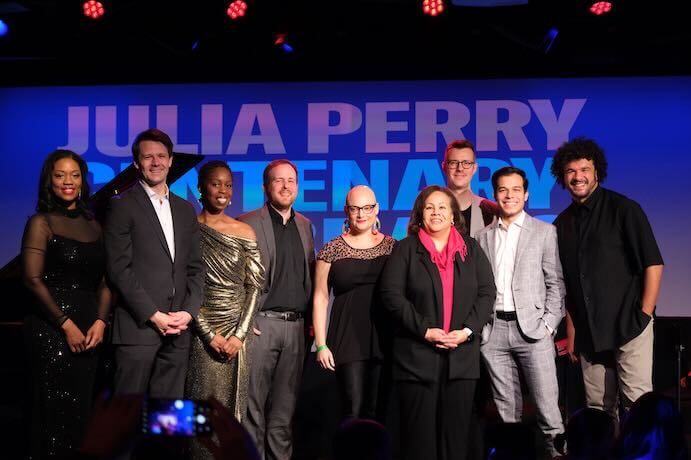
The Festival culminated at Alice Tully Hall on March 16 with Curtis Stewart and the Experiential Orchestra offering a resounding rendition of Perry’s staggering Violin Concerto, which also serves as the cornerstone of their recently released album, American Counterpoints (March 1, Bright Shiny Things). The concerto epitomizes Perry’s sound, skill, and creative vision. At its core, the work is a rigorous exploration of a handful of motives, and it expresses itself through an array of aesthetics that blend her signature dissonant tendencies with iconic moments of beauty. And, fittingly, Perry’s Violin Concerto would certainly be lost or unknown without a decades-long effort by scholars and musicians, namely the composer Roger Zahab, to reconstruct the piece from her manuscript and multiple unpublished versions.
The life of Julia Perry (not to mention her predecessors such as Hagan and Price) shows how deeply Black women composers have worked at the heart of American music, receiving great national and international acclaim in their time. However, their deaths also reveal the shallow mainstream institutional investment in their archives, legacies, and remembrance.
Perry’s centennial gives us a moment to reflect. If her life and music were about challenging what came before, then our work – through research, performance, recordings, public events, navigating copyright quandaries, and the exchange of knowledge – must strive to revolutionize the path ahead so that we might forge a more inclusive and experimental musical future, both for the trailblazers of the past and those who follow.
I CARE IF YOU LISTEN is an editorially-independent program of the American Composers Forum, and is made possible thanks to generous donor and institutional support. Opinions expressed are solely those of the author and may not represent the views of ICIYL or ACF.
You can support the work of ICIYL with a tax-deductible gift to ACF. For more on ACF, visit the “At ACF” section or composersforum.org.
